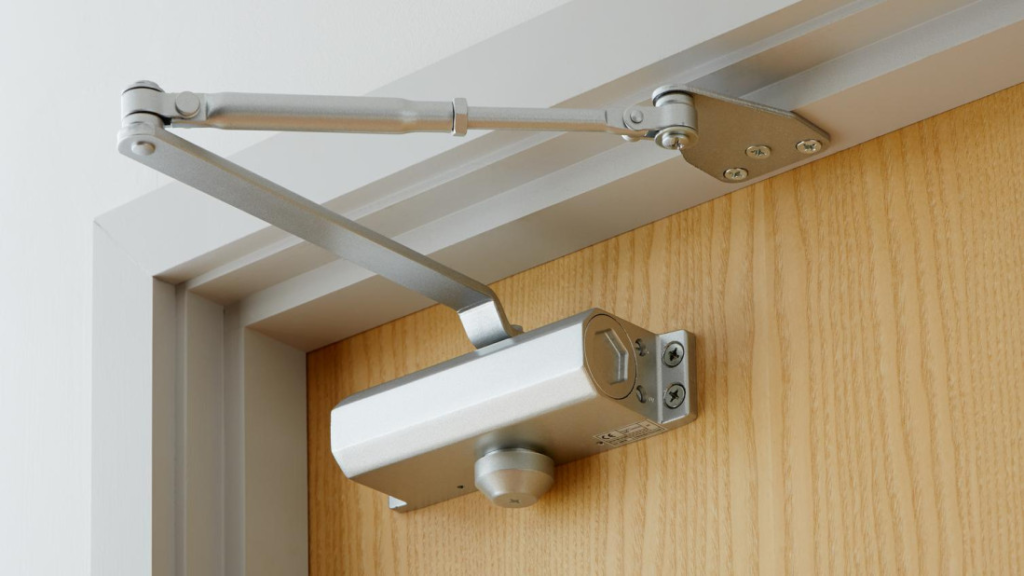A hydraulic door closer may seem like a small component, but it plays a vital role in ensuring door safety, convenience, and durability. For builders, project managers, and distributors, choosing the right model can significantly improve the performance and lifespan of doors in residential, commercial, or industrial environments.

In this guide, we’ll walk you through the most important factors to consider when selecting a hydraulic door closer for your project.
Whether you’re outfitting a commercial building or upgrading residential doors, a hydraulic door closer offers a reliable and smooth-closing solution that enhances both safety and convenience. Its precise control and adjustable features make it a preferred choice among architects and installers worldwide.
🚪 1. Consider the Door Size and Weight
The first and most important factor is door specifications. Hydraulic door closers are typically rated by their closing force, which corresponds to the weight and width of the door.
| Door Closer Size | Door Width (mm) | Door Weight (kg) |
|---|---|---|
| EN 2 | ≤ 850 | ≤ 40 |
| EN 3 | ≤ 950 | ≤ 60 |
| EN 4 | ≤ 1100 | ≤ 80 |
| EN 5 | ≤ 1250 | ≤ 100 |
🔧 Tip: Always choose a model with enough power to fully close the door even in windy conditions.
🧱 2. Choose the Right Installation Type for Your Hydraulic Door Closer (Surface-Mounted vs. Concealed)
Depending on the door structure and project requirements, a hydraulic door closer can be installed in two main ways:
- Surface-Mounted Hydraulic Door Closer: This is the most common installation method. The closer is mounted on the door or frame surface, making it easy to install and adjust. It’s suitable for most wooden, metal, and fire-rated doors and offers excellent value for money.
- Concealed Hydraulic Door Closer: Installed inside the door leaf or floor, this type offers a cleaner, more elegant appearance. It is commonly used in glass doors and upscale commercial spaces where aesthetics are a priority.
💡 Whether you choose a surface-mounted or concealed hydraulic door closer, always consider the door’s usage frequency, visual design requirements, and ease of maintenance.
🕹️ 3. Key Adjustable Features in a Hydraulic Door Closer
One of the biggest advantages of using a hydraulic door closer is the ability to fine-tune how the door operates. Depending on the model, these closers often come with multiple adjustable settings that improve user safety and door performance:
- Closing Speed Adjustment – controls how fast the door moves from fully open to almost closed
- Latching Speed Adjustment – controls the final few inches of closing for a firm, secure seal
- Backcheck Function – prevents the door from slamming open too forcefully, protecting walls and hinges
- Delayed Action – keeps the door open for a longer period before it starts to close, ideal for hospitals, schools, or places where people need more time to pass through
⚙️ Choosing a hydraulic door closer with multiple control valves ensures that you can adjust both the closing speed and latching force to meet specific usage scenarios.
🧯 4. Fire Safety & Certification Requirements
For public buildings, hospitals, or offices, choosing a certified fire-rated door closer is crucial. Look for products that comply with:
- EN1154 (Europe)
- UL 10C / ANSI Grade 1 (USA)
- BS 476 (UK)
🔥 Fire-rated closers are made of high-temp-resistant materials and often include self-closing features required by law.
🌎 5. Application Environment: Indoor vs Outdoor
Will the door be installed indoors or exposed to outdoor weather?
- For interior doors, standard hydraulic closers are sufficient.
- For external doors, choose closers with:
- Anti-rust surface treatment (e.g., powder-coated, stainless steel)
- Weather seals
- High closing force to resist wind
🧪 In coastal or high-humidity regions, corrosion-resistant materials are essential.
🧩 6. Special Door Types and Functions
Match the hydraulic door closer to your door type and function:
| Door Type | Recommended Closer Type |
|---|---|
| Fire-rated doors | EN3 or above, certified closer |
| Frameless glass | Concealed or floor spring closer |
| Heavy industrial | EN4–EN6, heavy-duty closer |
| High-traffic | Adjustable-speed closer with backcheck |
🎯 Some models offer hold-open function, but this may not be allowed on fire doors.
✅ Conclusion: The Right Closer Makes All the Difference
Choosing the right hydraulic door closer is not just about price—it’s about function, safety, and long-term value. By evaluating door size, location, features, and certifications, you can find a model that meets both project specs and end-user expectations.
🔍 Need help selecting the right door closer for your application?
Contact our team today for model recommendations, technical datasheets, and OEM service.
